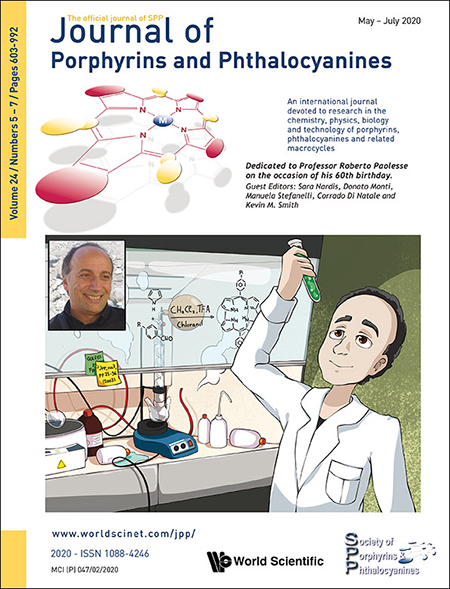Monoterpene-based metallophthalocyanines: Sustainable synthetic approaches and photophysical studies
Abstract
Tetra-substituted zinc(II) and copper(II) phthalocyanines bearing peripheral alkoxy-monoterpene groups were prepared by conventional vs. non-conventional synthetic approaches (ultrasound and microwave irradiation). The synthesis of (1R)-(–)-myrtenol (a) and (1R,2S,5R)-(−)-menthol (b) derived phthalonitrile precursors was performed through ipso-nitro aromatic substitution reactions, with optimal conditions being obtained using ultrasound irradiation, which allowed us to achieve full conversions in 4.5 h, with isolated yields up to 74%. The subsequent cyclotetramerization of monoterpene-based phthalonitriles was carried out using Zn(II) or Cu(II) salts as metal templates, and also using conventional and non-conventional heating methods. Microwave-assisted synthesis was shown to be the most efficient approach, providing complete conversions in 1 h, yielding the target monoterpene-based metallophthalocyanines in up to 70% isolated yields. Furthermore, photophysical and photochemical studies revealed that Zn(II) phthalocyanines possess fluorescence quantum yields in the range of ΦF= 0.27–0.29, while Cu(II) phthalocyanines exhibited room temperature phosphorescence. In addition, the monoterpene-based Zn(II) phthalocyanines led to high singlet oxygen quantum yields (ΦΔ= 0.55–0.69).

Dedicated to Professor Roberto Paolesse on the occasion of his 60th birthday.
Handbook of Porphyrin Science now available in 46 volumes


